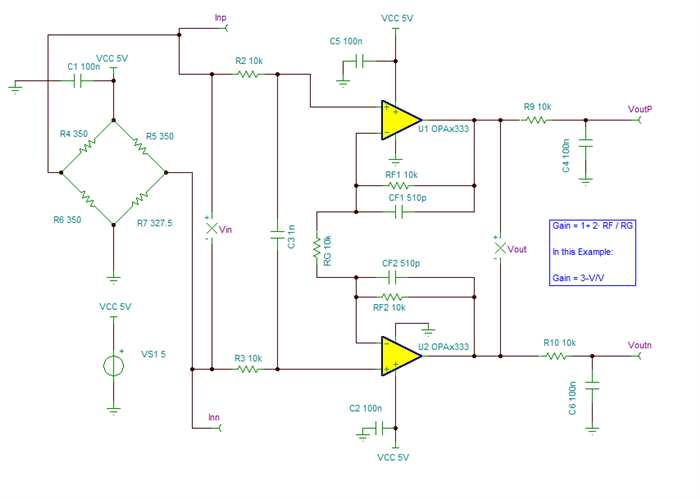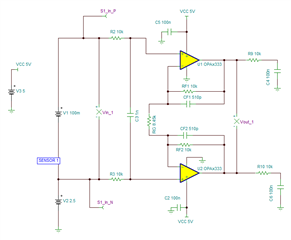Other Parts Discussed in Thread: OPA2333, OPA333, ADS1234, ADS1232, ADS1243
Is it possible for you to check this TINA circuit for me, where I am wrong and what should I change in the scheme?
Please can you show me any functional scheme to implement it in Load cell sensor together with strain gauge full bridge 350 ohm.
I have tried several Instrumentation Amplifiers but have had no success, and I think 2 INA333 or INA2333 might be more suitable for my project.4532.Noname.TSC




